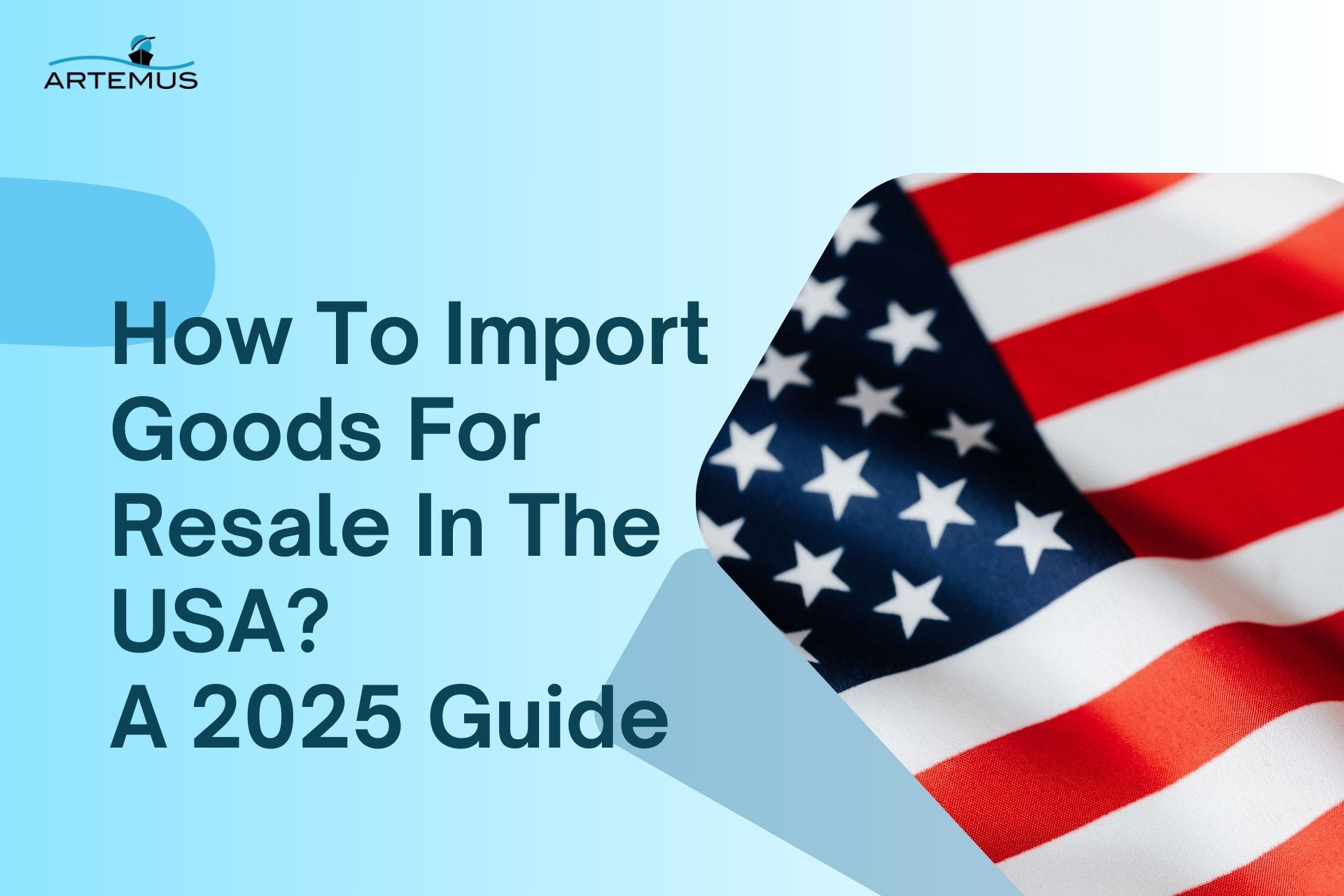
What Is Inbound Logistics & Outbound Logistics? A 2025 Guide
In the dynamic world of supply chain management, understanding the nuances of inbound and outbound logistics is crucial for operational

Exporting tea from India involves several critical steps to ensure compliance with international regulations. It starts with obtaining an Importer Exporter Code (IEC) from the Directorate General of Foreign Trade (DGFT) and adhering to quality standards set by the Tea Board of India. Proper packaging, labeling, and documentation are essential to meet the destination country’s requirements.
Navigating these steps can be complex, but with the right approach, Indian tea can reach global markets smoothly. Maintaining high quality and ensuring all certifications are in place is crucial. This not only satisfies legal requirements but also builds trust with international buyers.
Artemus offers a comprehensive ISF, AMS, & Custom Broker software solution for tea export compliance. We help exporters manage shipping details and regulatory requirements efficiently, allowing them to focus on growing their business while ensuring all documentation and compliance needs are met seamlessly.
Table Of Contents
Exporting tea from India involves several crucial steps and adherence to specific regulatory requirements. Here is a detailed guide to assist you in navigating the process:
Before embarking on the export journey, conduct thorough market research to identify potential markets and understand consumer preferences. Analyze trends, demand patterns, and competition to tailor your offerings effectively.
Ensure your business is legally compliant and registered. Key steps include:
Maintaining high-quality standards is crucial. Implement stringent quality control measures during production, processing, and packaging. Adhering to international quality standards and obtaining necessary certifications enhances marketability.
Invest in high-quality, attractive, and durable packaging that preserves the freshness of the tea. Ensure the packaging meets the labeling requirements of the destination country, including information on ingredients, weight, and origin.
Prepare all necessary export documentation, which typically includes:
Choose a reliable logistics partner to handle shipping. Ensure that the shipping method (sea or air) is suitable for maintaining the quality of tea. Understand the customs requirements of the importing country to avoid delays.
Secure the payment method, which could be through a Letter of Credit (LC), advance payment, or other secure means. Insure the shipment to cover any potential losses during transit.
Leverage e-commerce platforms to reach a global audience. Participate in international trade fairs and exhibitions to showcase your products and network with potential buyers and distributors.
Understand and comply with the food safety, labeling, and import regulations of the destination country. This includes obtaining necessary certifications and ensuring accurate documentation for customs clearance.
Related: Top 10 Items Exported From India To USA: A 2024 List
The Tea Board of India plays a pivotal role in regulating and promoting the tea industry in the country. Its responsibilities encompass various aspects crucial to maintaining the industry’s standards and facilitating its growth, especially in the realm of tea exports. Here are some key areas where the Tea Board of India significantly contributes:
This license permits the use of land for establishing new tea plantations, ensuring adherence to regulations and promoting sustainable growth.
This license regulates the disposal and management of tea waste, ensuring environmental standards are maintained.
Essential for businesses aiming to export tea, this license ensures compliance with international trade regulations and quality standards.
This license is required for operating tea warehouses, ensuring proper storage conditions and traceability of tea stocks.
Issued by the Tea Board, this certificate is mandatory for exporters to avail of benefits under the Foreign Trade Policy.
The Tea Board of India oversees the application process for export licenses, ensuring that only qualified and compliant businesses can export tea. The application process involves submitting detailed documentation, including business credentials, quality certifications, and compliance records. The Board meticulously reviews each application to maintain high standards in the export market.
The Tea Board of India’s role in issuing these licenses and managing the export license application process is crucial in sustaining the quality and reputation of Indian tea in the global market. By regulating and supporting the industry, the Board ensures that Indian tea continues to be a significant player in international trade.
Related: What Is A Certificate Of Origin For A Vehicle? Key Details
Exporting tea from India involves several critical steps and the preparation of various documents to ensure compliance with international trade regulations. Here are the key documents required for exporting tea from India:
The Importer Exporter Code (IEC) is issued by the Directorate General of Foreign Trade (DGFT). All exporters must conduct international trade.
The Registration Cum Membership Certificate (RCMC) is issued by the Tea Board of India. This certificate is required to avail benefits under the Foreign Trade Policy and to certify the exporter as a recognized member.
Quality Certification is issued by the Tea Board of India or other recognized quality control bodies. It ensures the tea meets the quality standards required by the importing country.
The Phytosanitary Certificate is issued by the National Plant Protection Organization (NPPO). It certifies that the tea is free from pests and complies with the plant health standards of the importing country.
The Commercial Invoice is issued by the exporter. It details the transaction between the buyer and seller, including the price, quantity, and description of goods.
The Packing List is issued by the exporter. It provides detailed information on the packing of goods, including weight, dimensions, and packaging type.
The Bill of Lading or Airway Bill is issued by the shipping or airline company. It acts as a receipt for the cargo and a contract for transportation.
The Certificate of Origin is issued by an authorized chamber of commerce or trade association. It certifies that the tea being exported is of Indian origin.
The Export License is issued by the Tea Board of India. It authorizes the exporter to legally export tea from India.
The Letter of Credit or specified payment terms are issued by the importer’s bank or exporter. This document specifies the terms of payment, ensuring the exporter receives payment for the goods.
Ensuring all these documents are prepared and submitted accurately is essential for a smooth export process. Proper documentation not only complies with legal requirements but also builds trust with international buyers and facilitates seamless trade operations.
Related: What Is HS Code In Shipping? The Harmonised System
Navigating the USA import regulations for tea involves understanding several key requirements to ensure compliance and smooth entry into the American market. Below are the primary regulations and standards to be aware of:
Foreign tea exporters must register their facilities with the FDA.
Importers must submit prior notice of incoming shipments to the FDA before the tea arrives in the USA.
The tea must comply with the FDA’s standards for food safety, which include regulations on pesticide residues and contaminants.
Importers must submit an Entry Summary (CBP Form 7501) along with invoices, packing lists, and bills of lading.
The Harmonized Tariff Schedule (HTS) code for tea must be correctly classified to determine import duties.
Tea packaging must indicate the country of origin.
This certificate, issued by the exporting country, ensures that the tea is free from pests and diseases.
For organic tea, importers must comply with the USDA National Organic Program (NOP) standards.
The EPA sets maximum residue limits (MRLs) for pesticides on tea, which must be adhered to ensure safety.
Importers must file an ISF, commonly known as the “10+2” rule, with the CBP at least 24 hours before the tea is loaded onto a vessel destined for the USA.
Importers must retain all relevant documents, including shipment records and compliance certificates, for a specified period as mandated by the CBP and FDA.
Understanding and adhering to these regulations is crucial for successfully importing tea into the USA. Compliance ensures that the tea meets safety standards and avoids delays or penalties during the import process.
Related: What Does Customs Clearance Completed Mean? Key Takeaways
India is renowned for its diverse tea production, which contributes significantly to its export market. The country exports a variety of tea types, each with unique characteristics and flavors. Here are the main types of tea exported from India:
Assam tea is known for its robust and malty flavor, often enjoyed as a strong, full-bodied brew. Grown in the Assam region, this tea is a staple in both domestic and international markets.
Often referred to as the “Champagne of Teas,” Darjeeling tea is celebrated for its delicate and floral aroma. It is produced in the Darjeeling district and is highly sought after for its unique flavor profile.
Hailing from the Nilgiri hills in southern India, Nilgiri tea offers a fragrant and brisk taste. It is popular for its smooth, well-rounded flavor and is often used in blends.
Produced in the Kangra Valley of Himachal Pradesh, Kangra tea is known for its light and aromatic taste with a hint of sweetness. It is less common but valued for its distinctive flavor.
India also exports green tea, which is less processed than black tea and retains a more delicate, fresh flavor. It is produced in various regions, including Assam and the Nilgiris.
White tea, a rarer and more delicate variety, is also part of India’s export lineup. It is known for its subtle, refined taste and is primarily produced in the Darjeeling region.
Each type of tea exported from India has its unique characteristics, contributing to the country’s esteemed reputation in the global tea market. Whether it’s the robust Assam, the fragrant Darjeeling, or the delicate white tea, India offers a diverse range of teas to meet various international preferences.
Related: Freight Forwarders Arrange Transportation Only By Ocean Shipping
Navigating the complexities of tea exports can be challenging, especially with international regulations. Artemus offers a specialized ISF & AMS software solution designed to streamline these processes for tea exporters.
Artemus software supports managing Importer Security Filing (ISF) and Automated Manifest System (AMS) requirements, ensuring that all documentation is accurately prepared and submitted. By automating compliance tasks, Artemus reduces the risk of errors and delays, facilitating a smoother export process.
With its user-friendly interface and robust features, Artemus enables tea exporters to handle the complexities of international trade efficiently, allowing them to focus on growing their business while maintaining compliance with regulatory requirements.
Related: Exporting Mangoes From India To The USA: How To Ship?
Yes, tea exports from India can be profitable due to the country’s high-quality tea varieties and strong global demand.
Yes, you need a license from the Tea Board of India to sell tea, including an Importer Exporter Code (IEC) for export activities.
Yes, you can import tea from India, provided you comply with the importing country’s regulations and standards.

Exporting tea from India offers substantial opportunities due to the country’s rich tea heritage and global demand. By understanding and adhering to the essential steps of securing the necessary licenses, meeting quality standards, and preparing accurate documentation exporters can navigate the complexities of international trade efficiently.
With careful attention to compliance and regulations, Indian tea can successfully reach markets worldwide, showcasing its quality and unique flavors.
Embracing these practices not only ensures a smooth export process but also enhances the potential for growth and success in the global tea industry.
Related: How To Export From India To USA? A 2024 Updated Guide

In the dynamic world of supply chain management, understanding the nuances of inbound and outbound logistics is crucial for operational

In today’s interconnected world, businesses rely heavily on global trade to expand their markets, access new resources, and drive growth.

Importing goods for resale in the USA presents a lucrative business opportunity, but navigating the complexities of U.S. customs regulations,
Get In Touch
Artemus’ Software Solutions for ISF, AMS, Japan AFR, eManifest Canada, & Panama B2B filings.